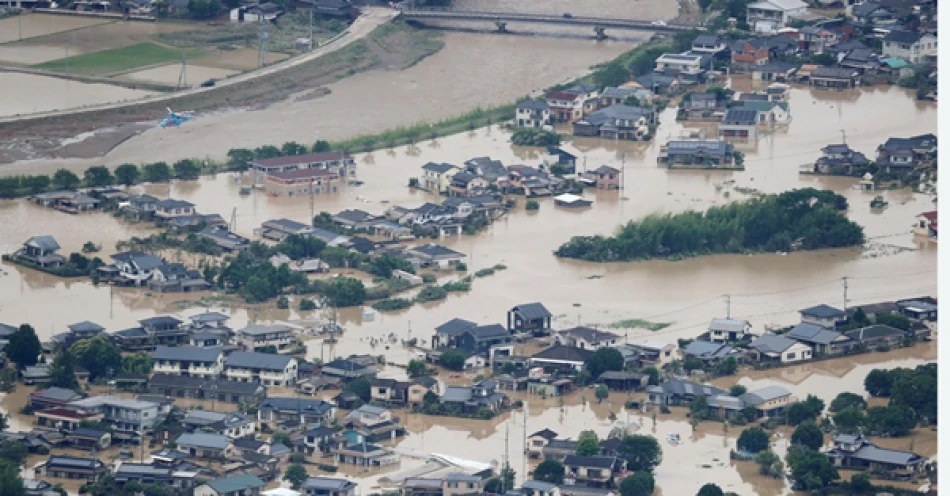
Heavy Rains Batter Southern Japan: Residents Brace for Flooding and Disruptions
Japan's Kyushu Island Faces Catastrophic Flooding as Climate Resilience is Put to the Test
Torrential rains battered Japan's southern Kyushu Island on Friday, triggering widespread flooding and landslides that forced over 360,000 residents into emergency shelters. The disaster highlights Japan's ongoing vulnerability to extreme weather events, despite being one of the world's most disaster-prepared nations, as climate change intensifies precipitation patterns across the Asia-Pacific region.
Emergency Response Mobilizes Across Two Prefectures
The Fire and Disaster Management Agency issued its highest-level emergency warnings for parts of Kagoshima and neighboring Miyazaki prefectures as the situation rapidly deteriorated. In the city of Ira, Kagoshima Prefecture, a landslide buried a residential home, trapping two people who were later rescued alive and hospitalized. The swift rescue operation demonstrates Japan's well-honed disaster response capabilities, developed through decades of managing natural disasters.
Prime Minister Shigeru Ishiba's government immediately established an emergency task force, with the premier declaring that "the government will do everything to protect your lives and safety." This rapid federal response reflects Japan's centralized disaster management protocols, refined since the devastating 2011 tsunami.
Infrastructure Paralyzed as Waters Rise
Television footage revealed muddy torrents surging through swollen rivers, while in Kirishima city, floodwaters reached knee-deep levels inside shopping centers, forcing commercial evacuations. The scale of urban flooding suggests that existing drainage infrastructure struggled to cope with the rainfall intensity—a growing challenge for Japanese cities as precipitation becomes more concentrated.
Transportation Networks Collapse
The deluge brought local transportation to a standstill, with train and bus services suspended across the affected regions. Dozens of flights to and from Kagoshima were cancelled, effectively isolating parts of southern Japan from the rest of the country. Such comprehensive transport disruptions carry significant economic implications, particularly for Kyushu's agricultural sector, which supplies much of Japan's domestic food production.
Climate Change Intensifies Japan's Weather Extremes
This flooding event fits a troubling pattern of intensifying extreme weather across Japan. The country has experienced increasingly severe rainfall events in recent years, with the Japan Meteorological Agency noting that hourly precipitation rates exceeding 50mm have become more frequent since the 1980s. Unlike typhoon-related flooding, which follows predictable seasonal patterns, these sudden deluges can occur with less warning, challenging even Japan's sophisticated early warning systems.
Japan's experience mirrors similar challenges facing other developed nations in the Asia-Pacific region, including South Korea and eastern Australia, where traditional flood management infrastructure is being overwhelmed by climate-driven precipitation changes. The frequency of maximum-level emergency warnings has increased significantly over the past decade, suggesting that what were once considered exceptional events are becoming more routine.
Economic and Social Implications
Beyond immediate safety concerns, such disasters impose substantial economic costs on Japan's already strained public finances. Kyushu's role as a major agricultural producer means that crop damage from this flooding could affect national food prices, particularly given Japan's limited agricultural self-sufficiency. The tourism industry, still recovering from pandemic impacts, faces additional setbacks as transportation disruptions and safety concerns deter visitors to the region.
The evacuation of over 360,000 people also underscores the massive logistical challenge of managing climate-related displacement, even temporarily. Japan's aging population adds complexity to these evacuations, as elderly residents may require specialized care in emergency shelters.
 Layla Al Mansoori
Layla Al Mansoori







